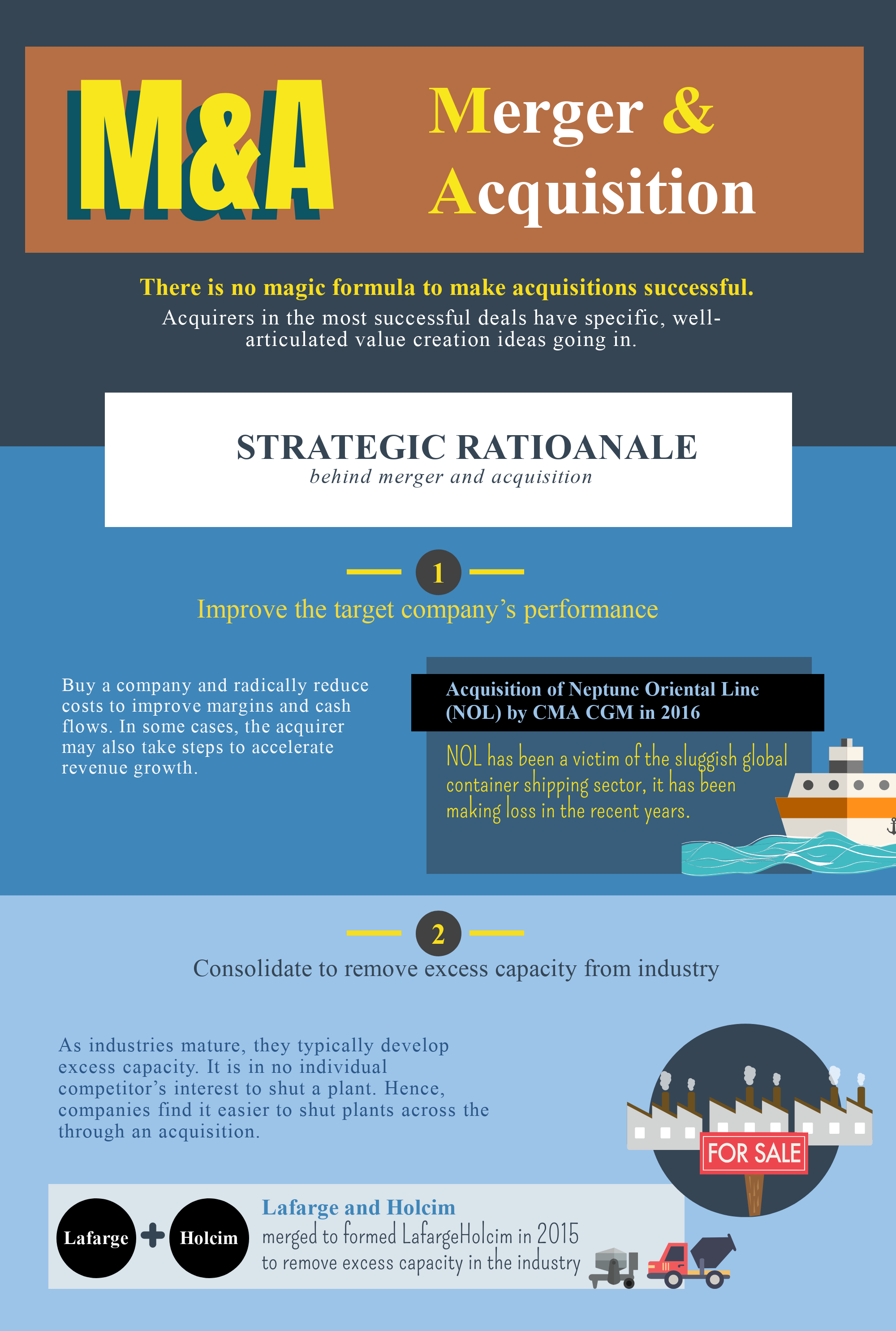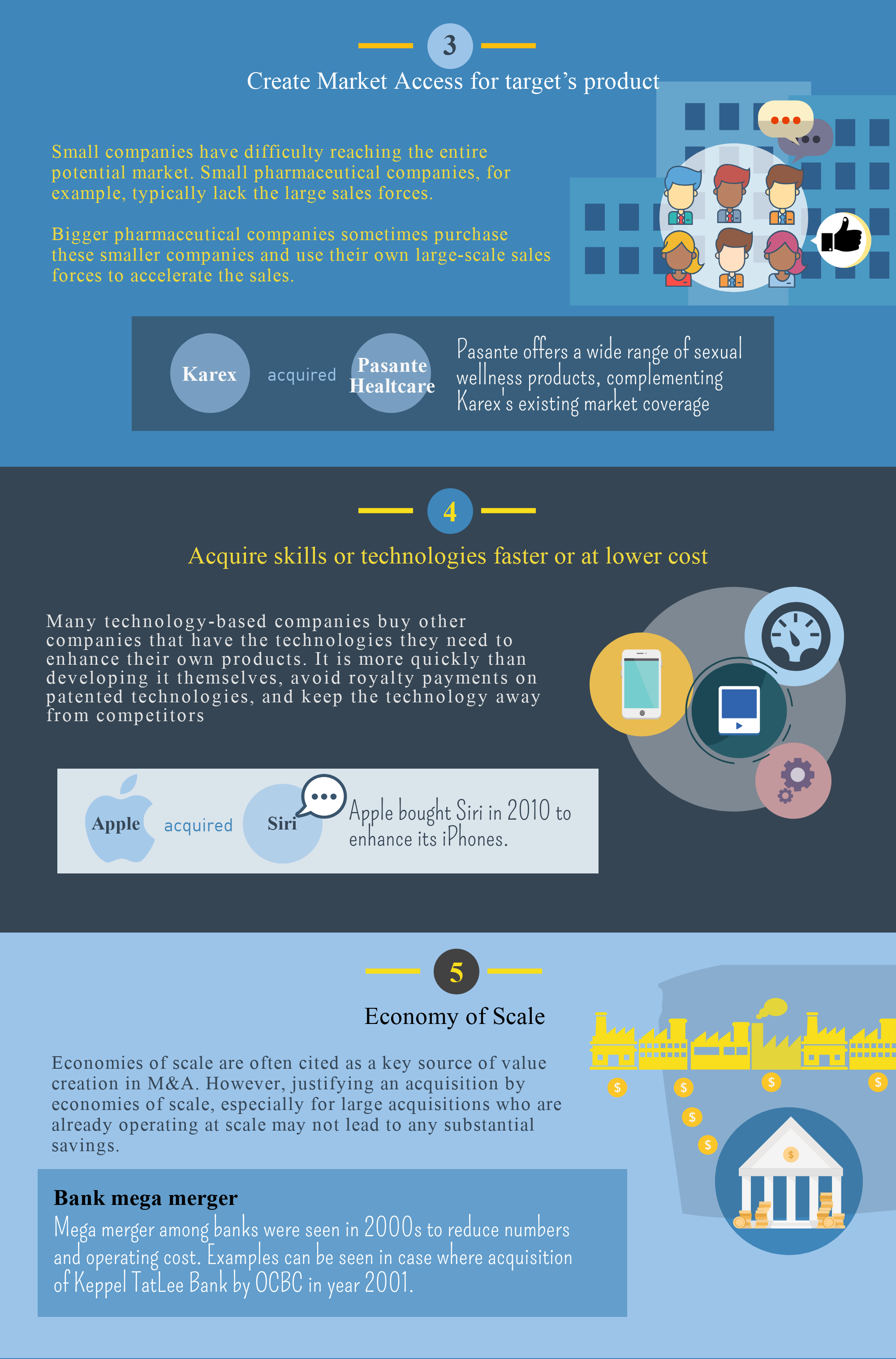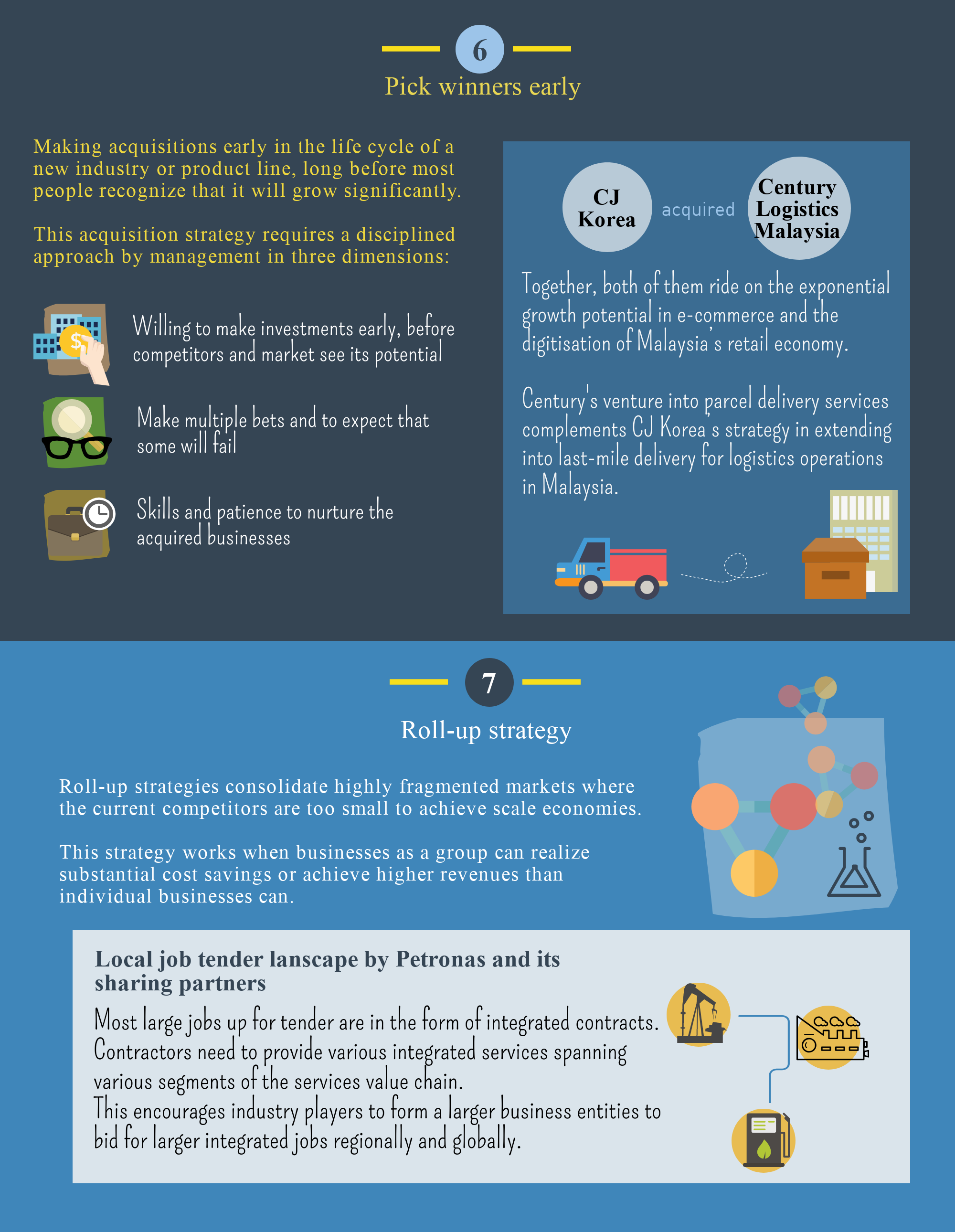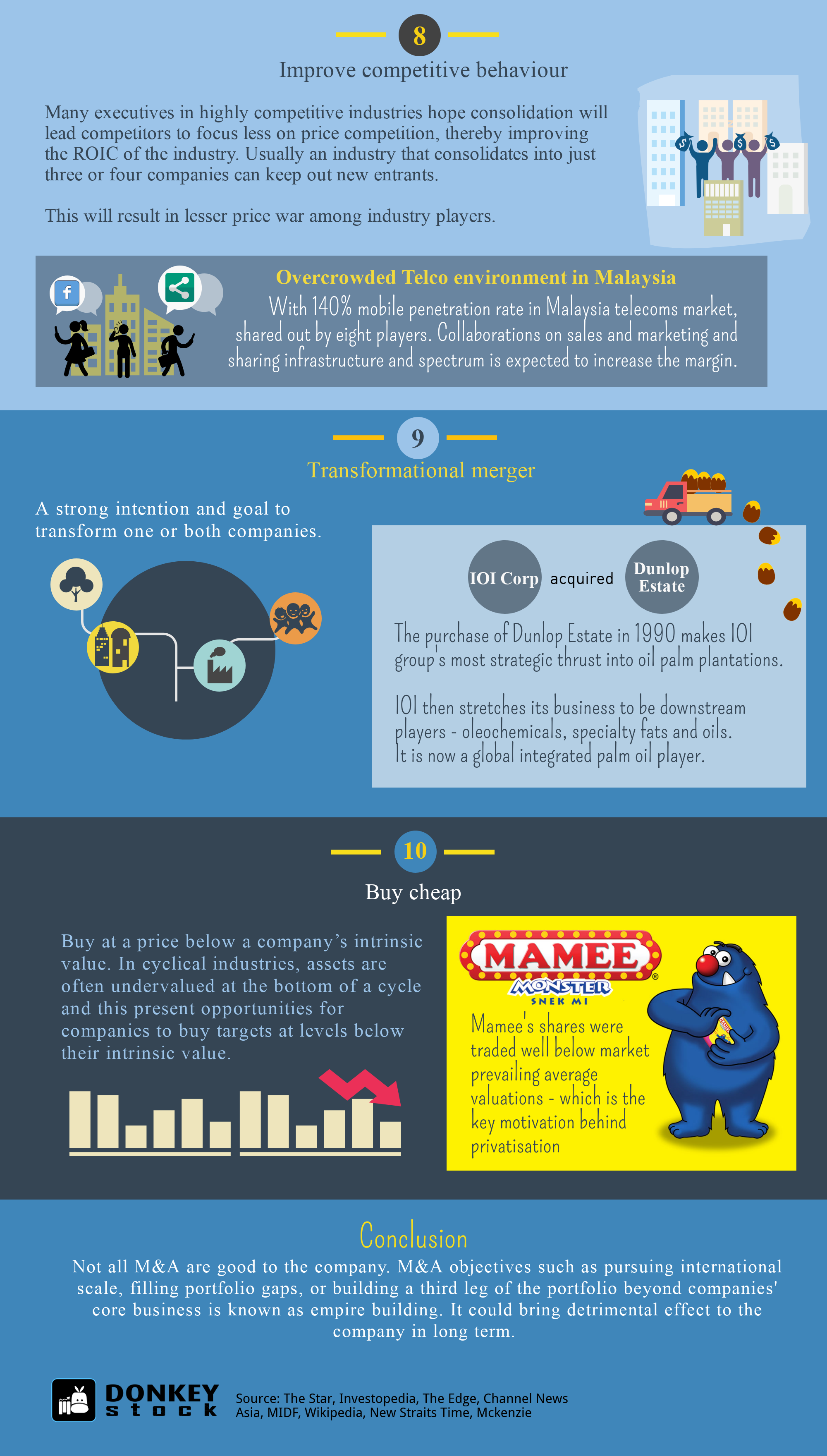Merger & Acquisition
Mergers and acquisitions (M&A) is a general term that describes the consolidation of companies or assets through various types of financial transactions.




There is no magic formula to make acquisitions successful. Acquirers in the most successful deals have specific, well-articulated value creation ideas going in. For less successful deals, the strategic rationales such as pursuing international scale, filling portfolio gaps, or building a third leg of the portfolio tend to be vague.
The strategic rationale for an acquisition that creates value typically fits at least one of the following types:
Improving the performance of the target company
Removing excess capacity from an industry
Creating market access for products
Acquiring skills or technologies more quickly or at a lower cost
Economy of Scale
Picking winners early
Roll-up Strategy
Improve competitive behavior
Transformational merger
Buy Cheap
Improve the target company’s performance
Buy a company and radically reduce costs to improve margins and cash flows. In some cases, the acquirer may also take steps to accelerate revenue growth.
Eg: CMA CGM buy NOL
Consolidate to remove excess capacity from industry
As industries mature, they typically develop excess capacity. It is in no individual competitor’s interest to shut a plant. Hence, companies find it easier to shut plants across the larger combined entity resulting from an acquisition.
Eg: Lafarge Holcim merges to remove excess capacity in the industry.
Create Market Access for target’s product
Relatively small companies with innovative products have difficulty reaching the entire potential market for their products. Small pharmaceutical companies, for example, typically lack the large sales forces required to cultivate relationships with the many doctors they need to promote their products. Bigger pharmaceutical companies sometimes purchase these smaller companies and use their own large-scale sales forces to accelerate the sales of the smaller companies’ products.
Eg: Karex buys the Trojan brand. Pasante offers a wide range of sexual wellness products including condoms, lubricants, HIV test kits, pregnancy test kits, and others.
Acquire skills or technologies faster or at a lower cost
Many technology-based companies buy other companies that have the technologies they need to enhance their own products. They do to acquire the technology more quickly than developing it themselves, avoid royalty payments on patented technologies, and keep the technology away from competitors.
Eg: Apple bought Siri in 2010 to enhance its iPhones.
Economy of Scale
Economies of scale are often cited as a key source of value creation in M&A. However, justifying an acquisition by economies of scale, especially for large acquisitions that are already operating at scale may not lead to any substantial savings.
Eg: Malaysia banks merge in the year 2000 mega-merger, reducing the number of branches and operation costs.
Pick winners early
Making acquisitions early in the life cycle of a new industry or product line, long before most people recognize that it will grow significantly. This acquisition strategy requires a disciplined approach by management in three dimensions. First, you must be willing to make investments early, long before your competitors and the market see the industry’s or company’s potential. Second, you need to make multiple bets and to expect that some will fail. Third, you need the skills and patience to nurture the acquired businesses.
Eg: CJ Group stake in Century Logistics
Roll-up strategy
Roll-up strategies consolidate highly fragmented markets where the current competitors are too small to achieve scale economies. This strategy works when businesses as a group can realize substantial cost savings or achieve higher revenues than individual businesses can. For example, several companies can also coordinate advertising across a city to reduce costs and raise revenues.
Eg: Consolidation of Petronas supplier
Improve competitive behavior
Many executives in highly competitive industries hope consolidation will lead competitors to focus less on price competition, thereby improving the ROIC of the industry. Usually, an industry that consolidates into just three or four companies can keep out new entrants. This will change the industry pricing behavior, which is usually a lesser price war among industry players.
Eg: Telecomunication provider
Transformational merger
A strong intention and goal to transform one or both companies.
Eg: IOI buys Dunlop, transforming rubber plantation company into and full fledge value chain palm oil company including oleochemical operation.
Buy cheap
Buy at a price below a company’s intrinsic value. In cyclical industries, assets are often undervalued at the bottom of a cycle, and this presents opportunities for companies to buy targets at levels below their intrinsic value.
Eg: Mamee double-decker privatized
By focusing on the types of acquisition strategies that have created value for acquirers in the past, managers can make it more likely that their acquisitions will create value for their shareholders.
Related Guides
Mental for Value Investing
2022-01-18
|
Guide
|
Tags: Portfolio
Value investing is an investment strategy that involves picking stocks that appear to be trading for less than their intrinsic or book value.
Types of yield curve and its impact to the market
2021-11-26
|
Guide
|
Tags: Portfolio
Yield Curve is a graph that shows how bond yields and maturities are related. Here are the types of the yield curve, factors affecting the yield curve and how the market interpret the different type of yield curve
Types of Coal
2021-11-25
|
Guide
|
Tags: Portfolio
Coal is an abundant natural resource that can be used as a source of energy and is primarily used as fuel to generate electric power. The article illustrates the major types or ranks of coal


